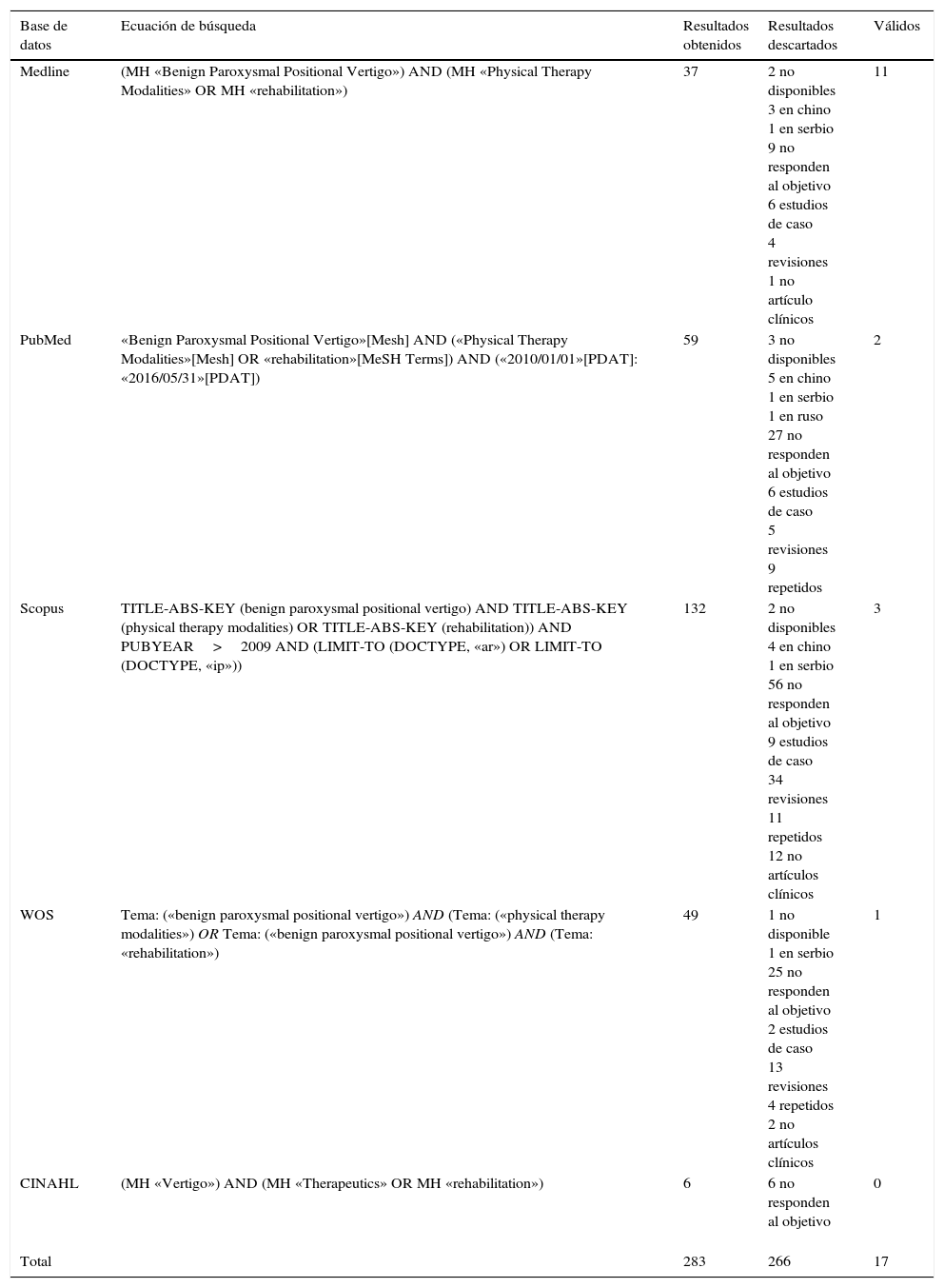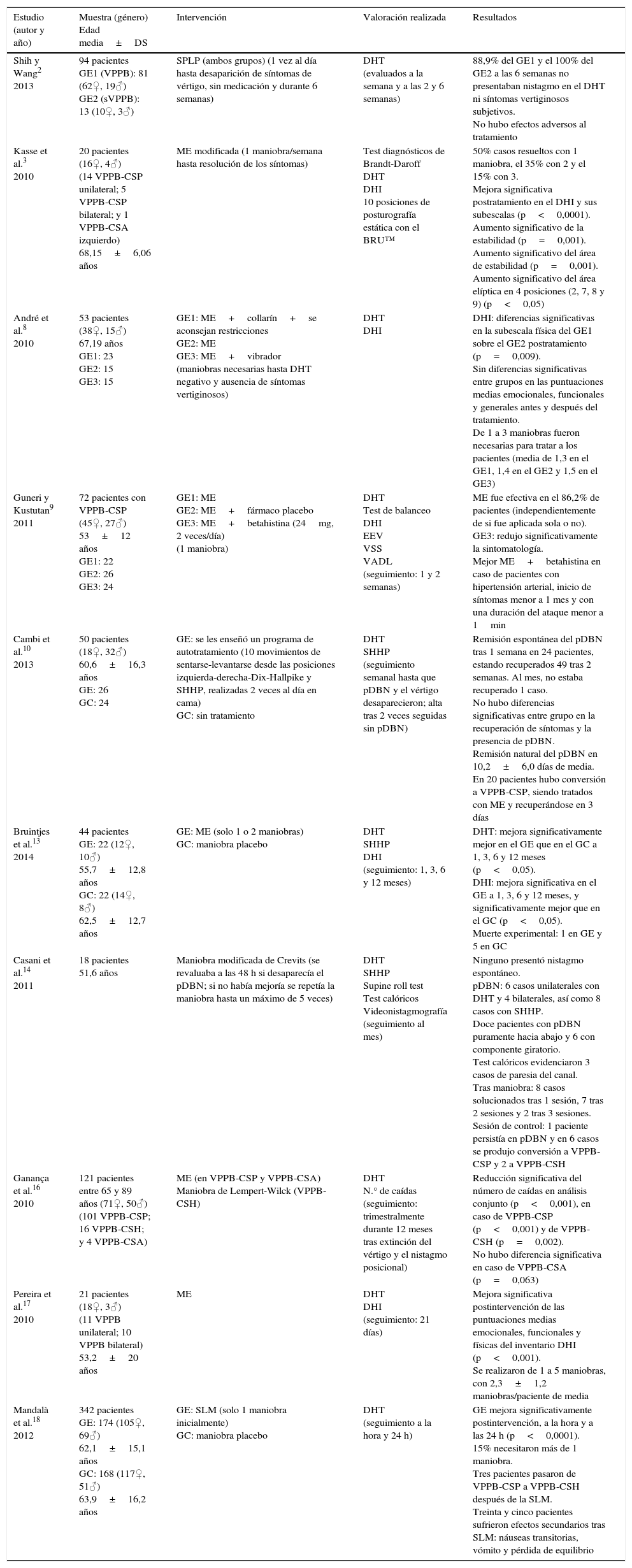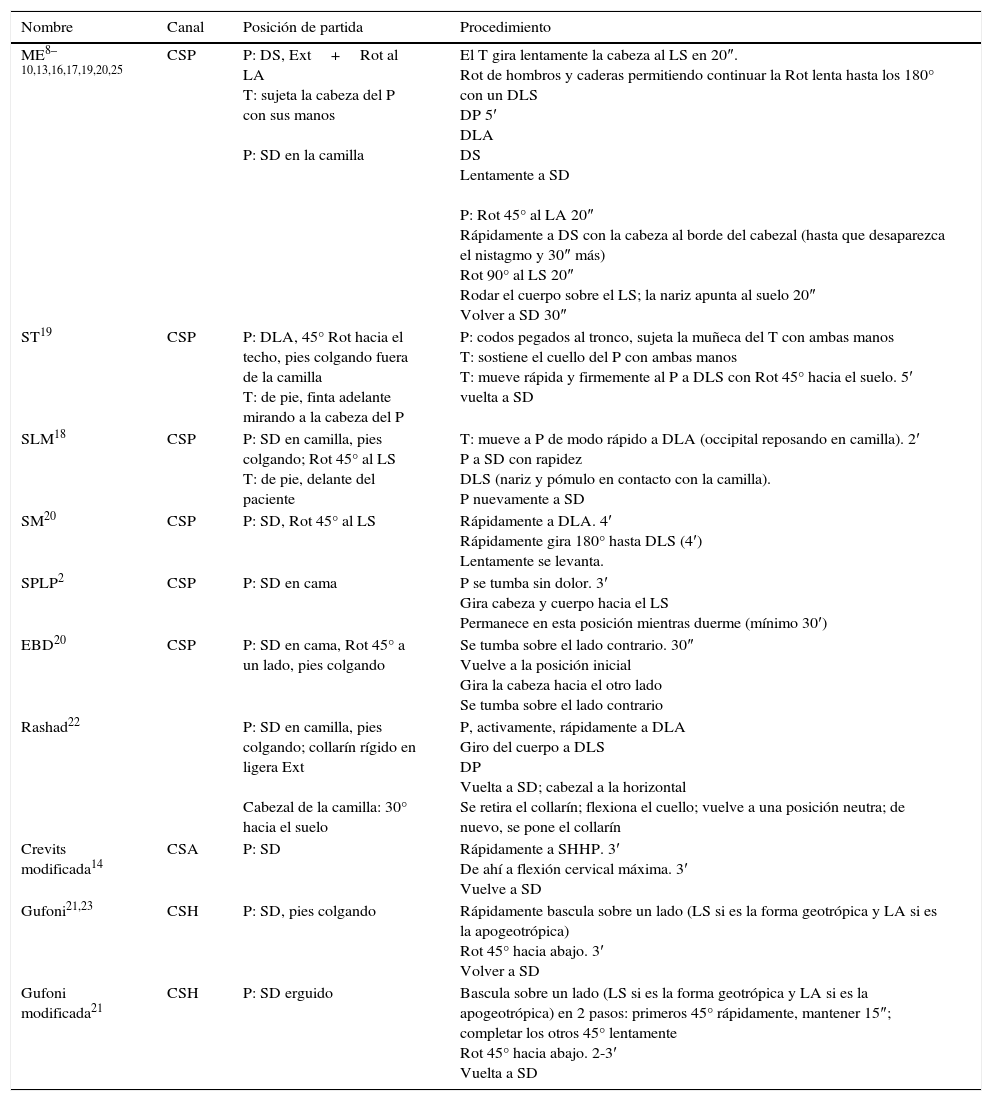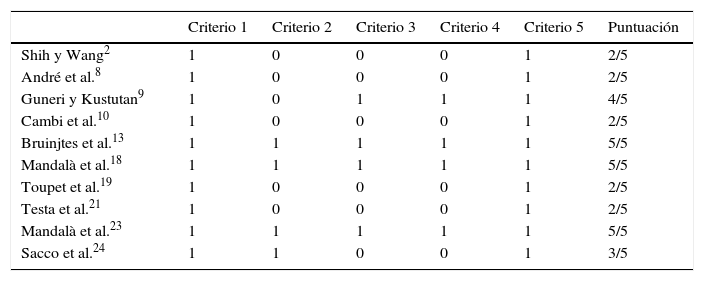Con el objetivo de revisar los resultados recientes obtenidos tras la aplicación de maniobras de reposicionamiento en el tratamiento del vértigo posicional paroxístico benigno (VPPB), se realizó una búsqueda de enero de 2010 a mayo de 2016 en Medline, Scopus, Web of Science, CINAHL y PubMed. Los criterios de inclusión fueron: estudios con pacientes afectados por VPPB, a los que se les realizase una maniobra de reposicionamiento, y con resultados pre- y postintervención. Se obtuvieron 17 estudios. Estos resaltan que el canal semicircular posterior es el más afectado habitualmente, que el VPPB afecta más a mujeres y durante la sexta y séptima décadas de la vida, que el principal test de valoración empleado es el de Dix-Hallpike y que la maniobra de Epley es la más usada y parece que más efectiva. Sin embargo, se precisa protocolizar las pautas diagnósticas y de tratamiento del VPPB, teniendo en cuenta que hay resoluciones espontáneas, afectación de otros canales semicirculares distintos al posterior o pueden existir contraindicaciones a determinados movimientos en algunos pacientes. Además, son necesarios estudios de mayor calidad metodológica.
This study aimed to review current evidence on the results obtained after implementation of repositioning manoeuvres in the treatment of benign paroxysmal positional vertigo (BPPV). To do this, a search was made of Medline, Scopus, Web of Science, CINAHL and PubMed databases for articles published from January 2010 to May 2016. Inclusion criteria consisted of studies in patients with BPPV treated with a repositioning manoeuvre, and with pre- and postintervention results. Seventeen studies were obtained. The main results indicate that the posterior semicircular canal is usually the most affected site and that BPPV is more common in men than in women and during the sixth and seventh decades of life; the main test used is the Dix-Hallpike test and the most widely used manoeuver is the Epley manoeuvre, which seems to be the most effective. However, guidelines on the diagnosis and treatment of BPPV should be protocol-based, considering that the condition sometimes resolves spontaneously, there may be involvement of other semicircular canals, and certain movements may be contraindicated in some patients. There is a need for studies with higher methodological quality.










